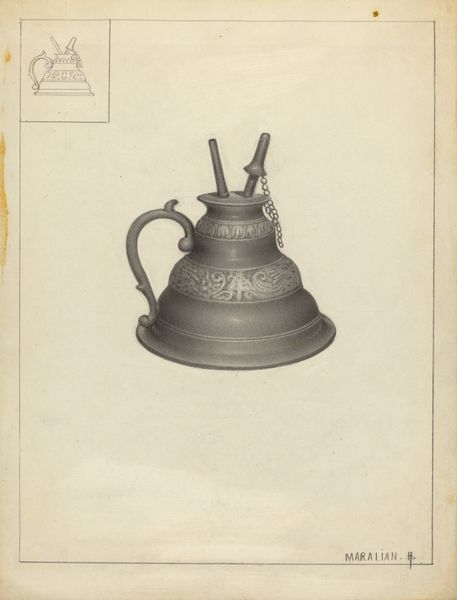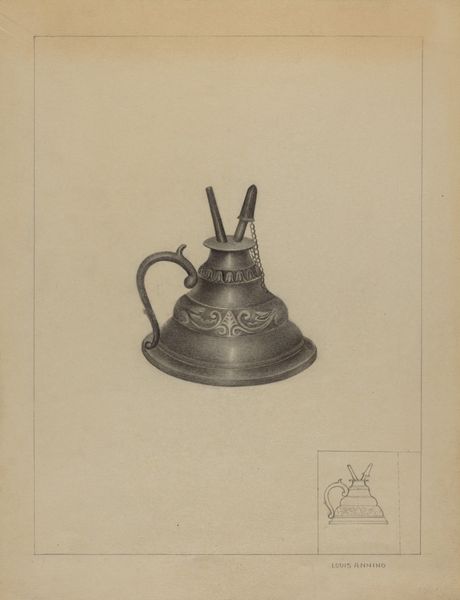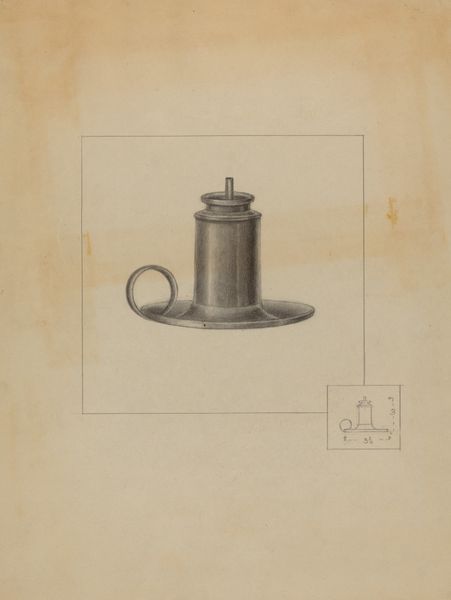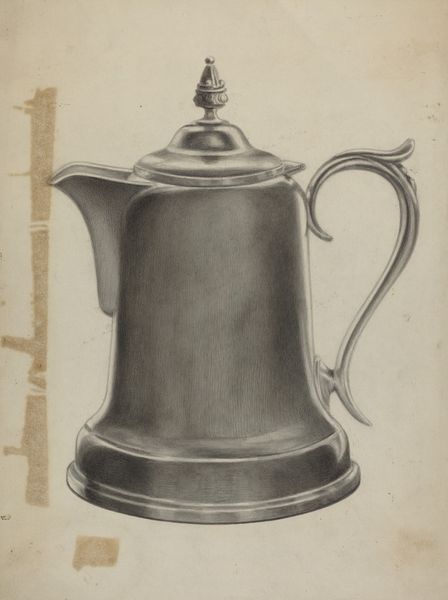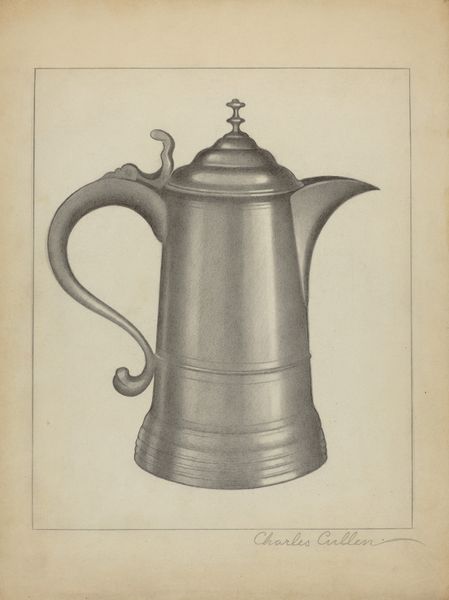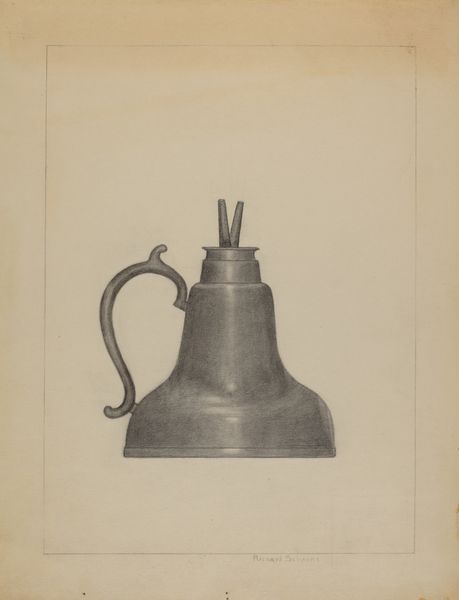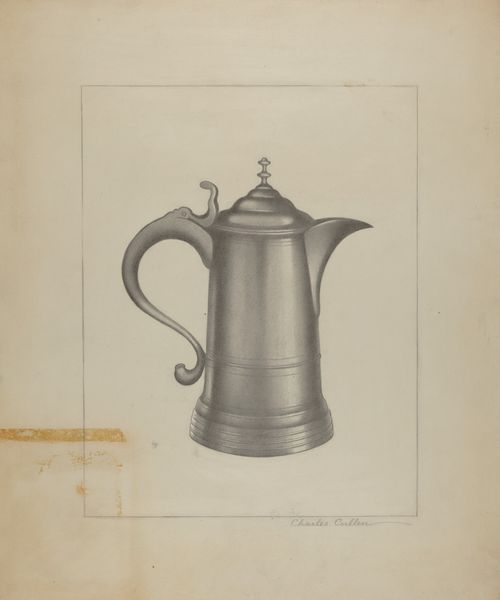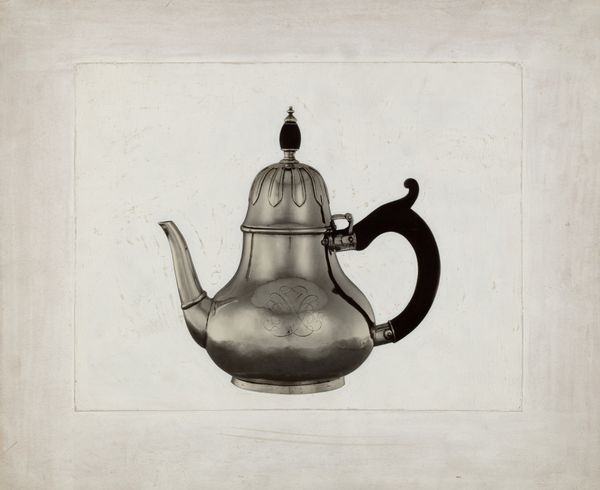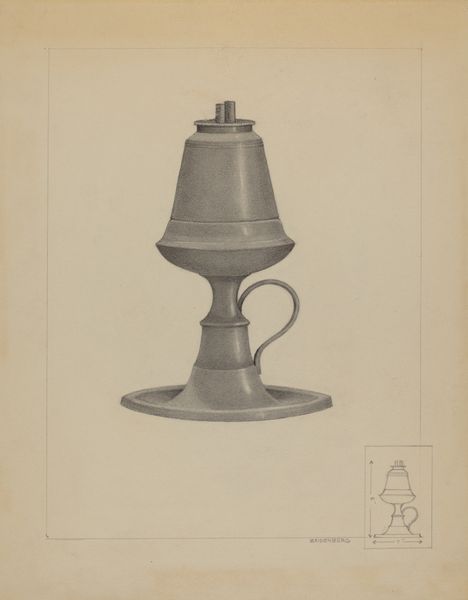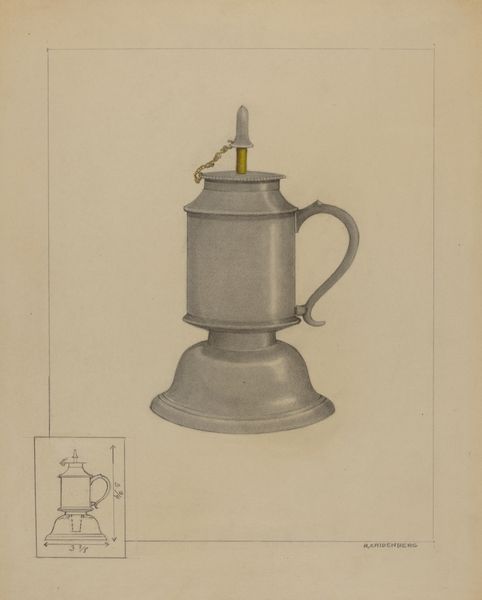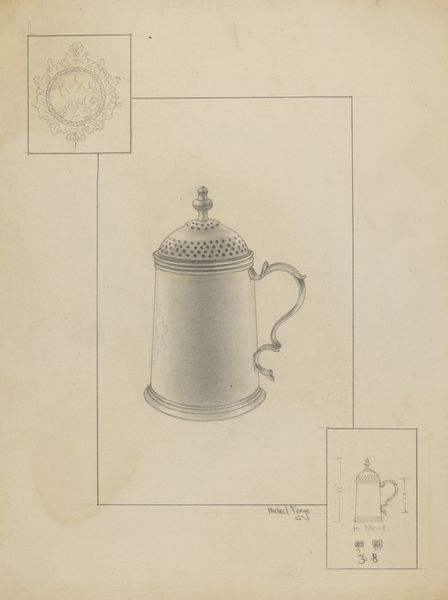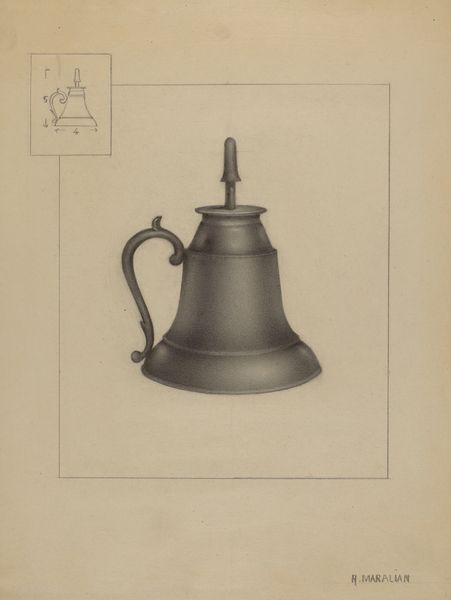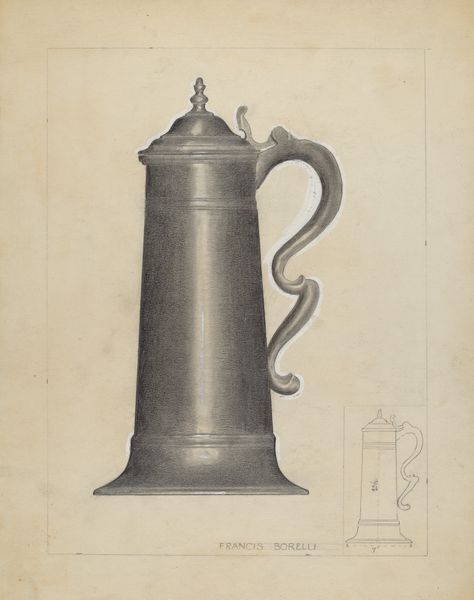
drawing, pencil, graphite
#
drawing
#
pencil
#
graphite
#
academic-art
Dimensions: overall: 30 x 23 cm (11 13/16 x 9 1/16 in.) Original IAD Object: 4 1/2" high; 4" wide
Copyright: National Gallery of Art: CC0 1.0
Curator: Looking at "Lamp," a graphite and pencil drawing from around 1936 by Ruth Bialostosky, I am immediately struck by its stillness. There’s an almost melancholic quality in the gradations of grey and the sharp details, don't you agree? Editor: Absolutely. Before delving into historical contexts, what captivates me is the meticulous craftsmanship evident in Bialostosky’s shading. The interplay of light and shadow creates a tangible sense of form, transforming a mundane object into something monumental. The eye is immediately drawn to the way the light glints off the metallic surface. Curator: And, consider the sociopolitical climate of the time. This drawing, created during the Great Depression, echoes the period's artistic focus on realism and functionality. Objects of everyday life, depicted with such precision, often served as silent witnesses to economic hardship and societal change. Bialostosky elevates the quotidian, possibly imbuing it with greater significance. Editor: I concur, although it's worth considering the academic-art style as well. By focusing on formal concerns like perspective and verisimilitude, Bialostosky is adhering to traditional representational values, using this lamp as a formal, almost abstract exercise in shape and tonality. The addition of seemingly unrelated sketches and measurement details give this an added layer of the preparatory or incomplete. Curator: Right, there is definitely that quality of it being in development. Her choice of medium—graphite and pencil—speaks volumes, too. It's a restrained palette, fitting for an era marked by scarcity. Color would almost be obscene! But I can't help thinking of the context of the Cleveland School, of which Bialostosky was affiliated, as often striving for a visual austerity as a tool for direct communication with its audience, reflecting the hardships faced by working-class communities during this era. Editor: Perhaps, and looking at it more closely now, I have to wonder whether Bialostosky meant to imbue this “Lamp” with layers of meaning we are in turn imbuing, or simply dissect its inherent properties—cylindrical forms, reflective surfaces, and so on. Even its position relative to the other geometric studies that float on the same sheet opens up all kinds of readings and interpretations. Curator: It prompts us to question whether such seemingly mundane things such as an unlit lamp had a symbolic charge in the midst of profound societal uncertainty and change. Editor: Exactly, whether purely formal exploration, subtle symbolism, or both, the work’s brilliance remains in the quiet potency of its composition and technique.
Comments
No comments
Be the first to comment and join the conversation on the ultimate creative platform.
